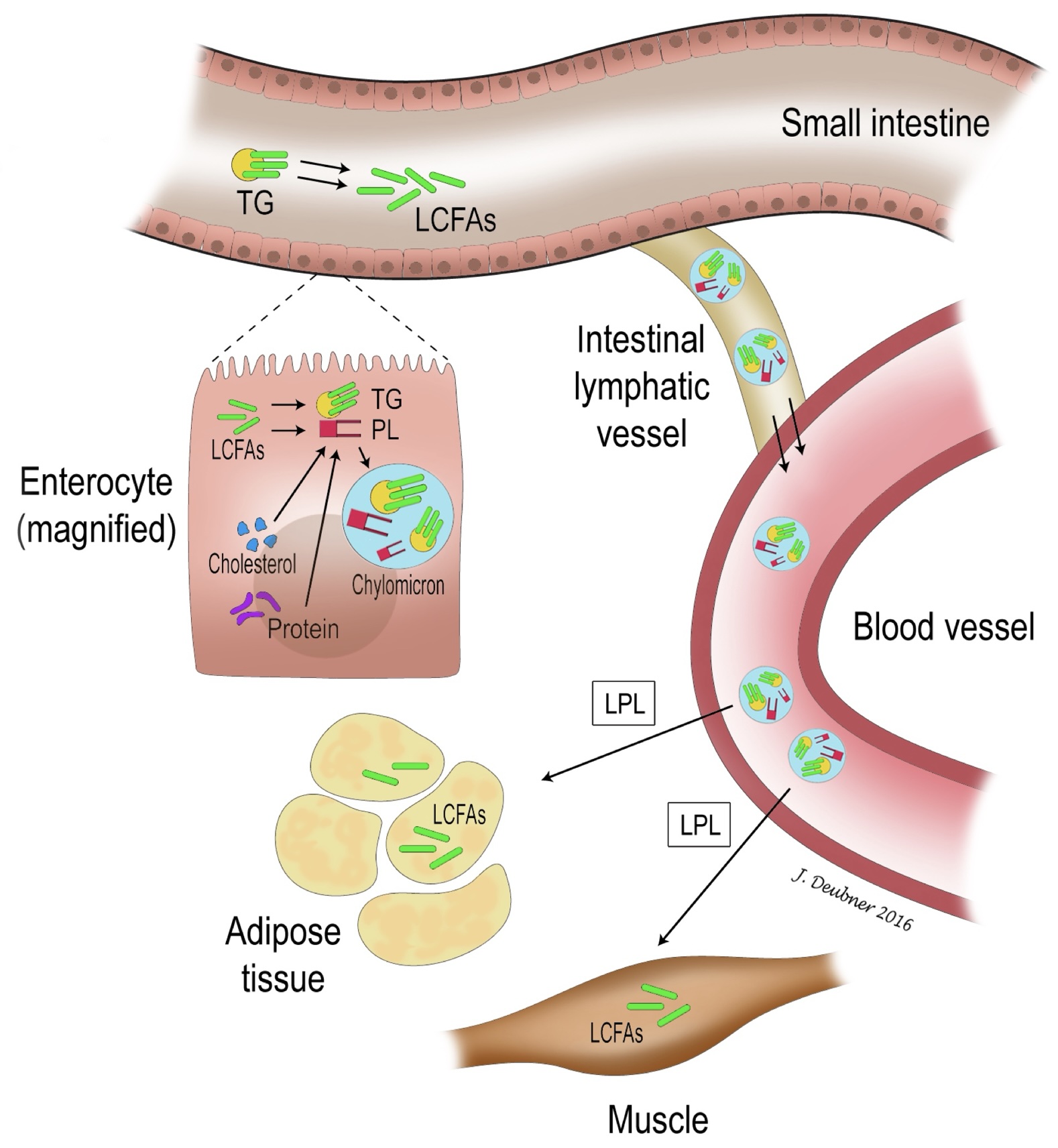Lipid Structure and Transport
Long chain fatty acids (LCFA) are the building blocks of triglycerides and phospholipids. Triglycerides consist of 3 LCFAs esterified to glycerol, while phospholipids have a glycerol core, LCFAs, and a phosphate group. LCFAs may be absorbed from dietary sources in the digestive tract or synthesized by the liver from glucose (in nonruminants) or acetate (in ruminants). In the small intestine, dietary fat is broken down into LCFAs and other components, which are then recombined into triglycerides and phospholipids (Fig. 13.1). Because lipids are not water soluble they must be assembled into lipoproteins before they can be transported in plasma and lymph. Within enterocytes, digested triglycerides and phospholipids are combined with proteins and cholesterol into triglyceride-rich molecules called chylomicrons (a specific type of lipoprotein). Chylomicrons travel through intestinal lymphatics and then blood to reach target tissues such as muscle or adipose tissue for storage. The triglycerides must be broken down again into LCFAs in order to enter muscle and fat cells; this is done enzymatically by lipoprotein lipase, which is located on the capillary endothelium of the target tissue. When required for energy, LCFAs derived from triglycerides in adipose tissue enter the plasma (bound to albumin) and are transported to tissues such as liver and muscle for utilization. The synthesis and use of LCFAs are controlled by insulin and glucagon (see Chapter 10: Endocrine System).

Cholesterol is obtained from animal products in the diet and is also synthesized in the liver. In addition to being an essential constituent of cell walls, cholesterol is a precursor of steroid hormones, vitamin D, and bile acids. Cholesterol is transported in lipoprotein form, for example, as low-density lipoprotein from its site of synthesis in the liver to target tissues.
Main component of triglycerides and phospholipids.
Association of lipid with protein for lipid transport.
Water soluble molecule used for triglyceride transport
Specialized layer of cells lining the blood vessels.
Most abundant plasma protein in health; maintains oncotic pressure.
Formed in the liver from cholesterol and excreted into the intestine to aid the digestion of fats. Measurement after a meal can be useful in evaluating hepatic function.

